Riding a motorcycle across Tibet is about as close as it gets to truly experiencing the Roof of the World. Imagine plunging through prayer-flag-strewn passes, roaring along the Friendship Highway toward Everest, and camping beside turquoise high‑altitude lakes. It’s not just a tour—it’s a lifestyle odyssey.
Motorcycling offers:
• Freedom to explore remote cultural sites like Ganden and Samye
• Intense immersion in stunning landscapes—from the plateau to glacial passes
• A sense of raw adventure blended with spiritual depth, especially on routes like the Mount Kailash circuit or Everest Base Camp.
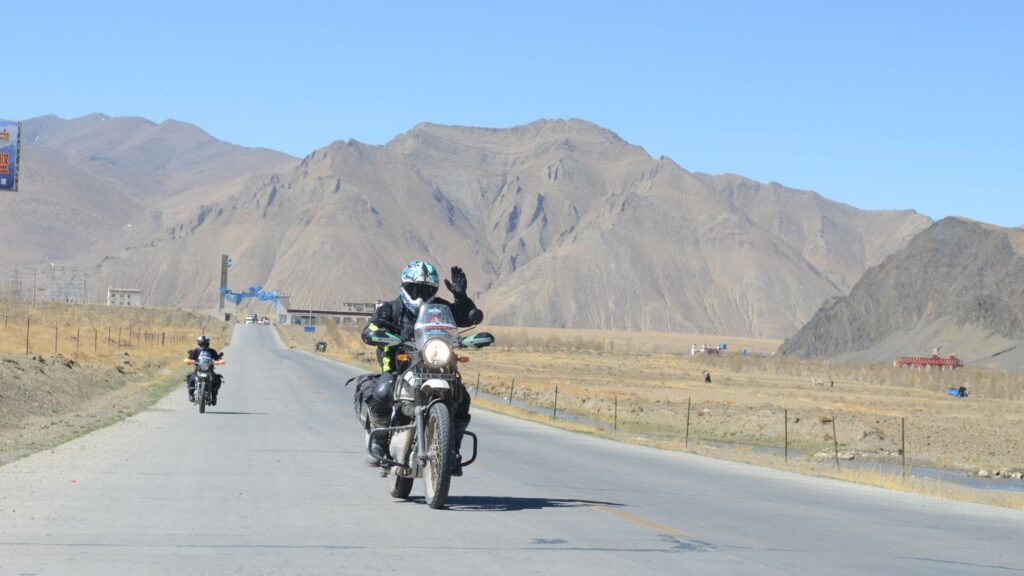
Planning: When, Where & How To Join
📆 Best Time to Ride
The riding season in Tibet runs from late April to early October. Spring (May–June) offers wildflower blooms and clear skies. Fall (Sept–Oct) brings crystal views and fewer rains. Winter is not feasible—snow blocks the roads, and it’s dangerously cold.
🛣️ Routes to Consider
• Friendship Highway (Kathmandu–Lhasa–Everest–Nepal border): The classic route featuring Everest Base Camp, Gyatso La (5,220 m), Rongbuk Monastery, and Yamdrok Lake.
• Central Tibet Tour: Loop including Namtso Lake, Ganden, Shigatse, Everest side trips.
• Mount Kailash Detour: Spiritual route around the sacred peak and Lake Manasarovar.
📋 Tour Format
Independent motorcycle travel is not permitted in Tibet. Foreign riders must join an organized tour via a registered agency. This includes guides, support truck, permits, and road clearance.
📑 Permits & Documentation
You’ll need:
• Chinese Tourist Visa (Group Tourist L visa)
• Tibet Travel Permit (TTP), Aliens’ Travel Permit, and sometimes Military/Frontier Passes for Everest/Kailash
• Temporary Chinese driving license and plate if using your bike
Operators handle paperwork, but expect a 60-day lead time if importing your motorcycle.

Bikes, Gear & Support
🏍️ Bike Options
Most companies offer Royal Enfield Himalayan (410 cc) or Classic 500 cc—reliable, rugged brands suited for high-altitude terrain. Some recent groups use bikes like Shineray X5, CF Moto, or BMW GS models. A bigger displacement (650cc+) is preferable for power on high passes.
Purchased bikes require customs paperwork and registration; many opt to rent for convenience.
🚑 Support Logistics
Every rider is backed by:
• A support vehicle with fuel, spare parts, and a mechanic
• Accommodation in local guesthouses, basic hotels, or campsites
• Food arranged (in Tibet, local menus include momos, thukpa, Tibetan breads; Nepali stops offer international options)
🎒 Essential Gear
Bring:
• Protective riding gear: helmet, armored jacket/pants, gloves, riding boots
• High-altitude clothing: layers, wind/rain shell, thermal underwear, sunglasses
• Emergency kit: first aid, sun lotion, hydration tablets
• Spares: fuel bottle, tire repair kit, tools, duct tape, cable ties, power bank
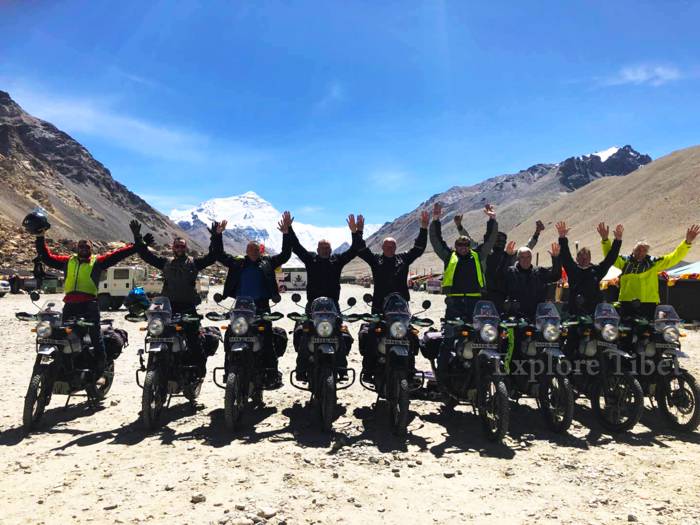
Altitude & Riding Challenges
🏔️ Altitude Effects
Expect thin air above 3,500 m. Symptoms include fatigue, dizziness, and headaches. Operators build rest days into itineraries (e.g., time in Lhasa or Tingri) and offer the option to ride in a support vehicle if needed.
🛤️ Road Conditions
Expect a mix:
• Smooth asphalt on major highways (e.g. Lhasa–Shigatse)
• Gravel, potholes, dirt roads in remote zones
• Sections prone to landslides or mud, especially near Everest routes or Yamdrok Lake approach
🌦️ Weather Hazards
Tibet’s climate is notorious for volatility:
• Spring: wind and lingering snow
• Summer: occasional monsoon rains
• Autumn: crisp skies but chilly nights
• Winter: avoidable due to snow and ice hazards
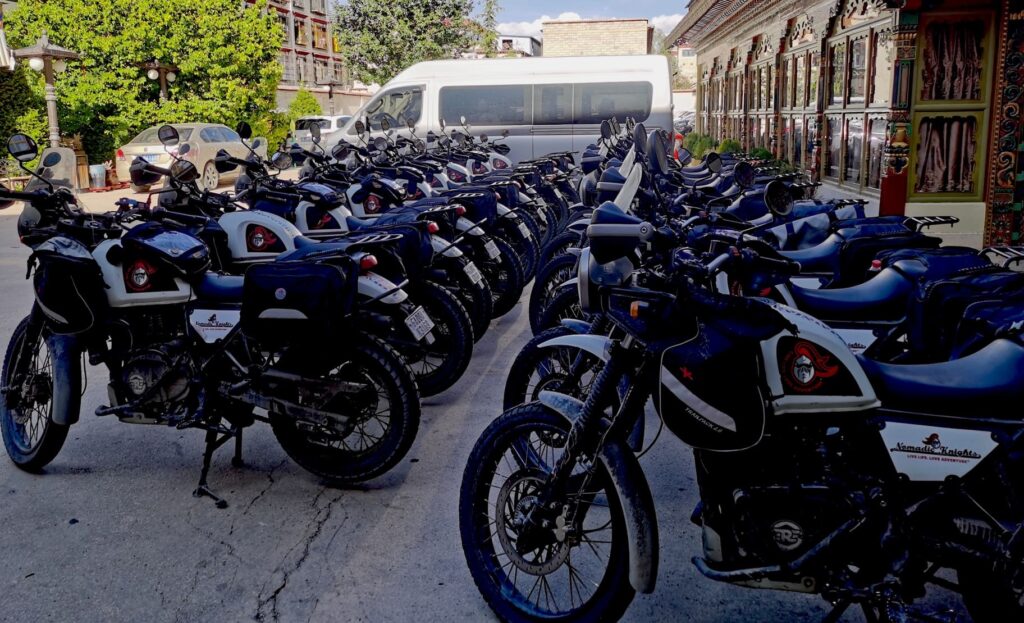
17-Day Riding Route
Day 1–3: Kathmandu → Lhasa via Nyalam (3,800 m)
Cross the Friendship Bridge, then climb into Tibet through Nyalam. Acclimatize and ride gently.
Day 4–6: Tingri → Everest Base Camp
Ride Gyatso La pass (5,220 m) toward Tingri, then onward to Rongbuk Monastery and Base Camp (5,150 m). Overnight at the monastery.
Day 7–9: Shigatse → Gyantse → Lhasa
Ride from the Everest side back to Shigatse (Tashilhunpo), Gyantse (Kumbum stupa), then to Lhasa, visiting monasteries like Jokhang and Potala.
Day 10–12: Lhasa → Ganden → Namtso Lake Loop
Excursion to Ganden Monastery, then up to Namtso Lake (4,718 m) with hikes and lakeside camping.
Day 13–16: Lhasa → Kailash Route (optional)
If included: ride west toward Mount Kailash and Lake Manasarovar, and optionally perform the Kora circuit around Kailash (~52km, 3-day trek).
Day 17: Return to Kathmandu
Descend over the border via Kyirong or Nyalam, savoring final views and completing the loop.

Spiritual & Cultural Highlights
While not just about riding, your route weaves through sacred landscapes:
• Monasteries: Jokhang, Sera, Drepung, Samye, Tashilhunpo
• Pilgrimage sites: Mani walls, prayer wheels, Lake Manasarovar, Mount Kailash kora
• Nomadic villages: stop to interact or camp among highland herders
Locals often appreciate respectful passes—slow riding near pilgrims, greeting with “Tashi Delek”, and offering space when incense or prayer flags abound.
⸻
Safety & Responsible Travel
✅ Respect & Etiquette
• Never ride solo—always in a tour group
• Avoid honking near pilgrims or yaks
• Always walk/kora clockwise at temples and mani walls
• Support Tibetan-run agencies to honor local economies
⚕️ Health & Emergencies
Download an app or bring altitude medications like Diamox (with prior consultation). If symptoms persist, rest at a lower altitude or ride in a support vehicle.
🧳 Travel Insurance
Ensure your policy covers high-altitude adventure, medical evacuation, and motorcycle touring. Make copies of all permits and documents.
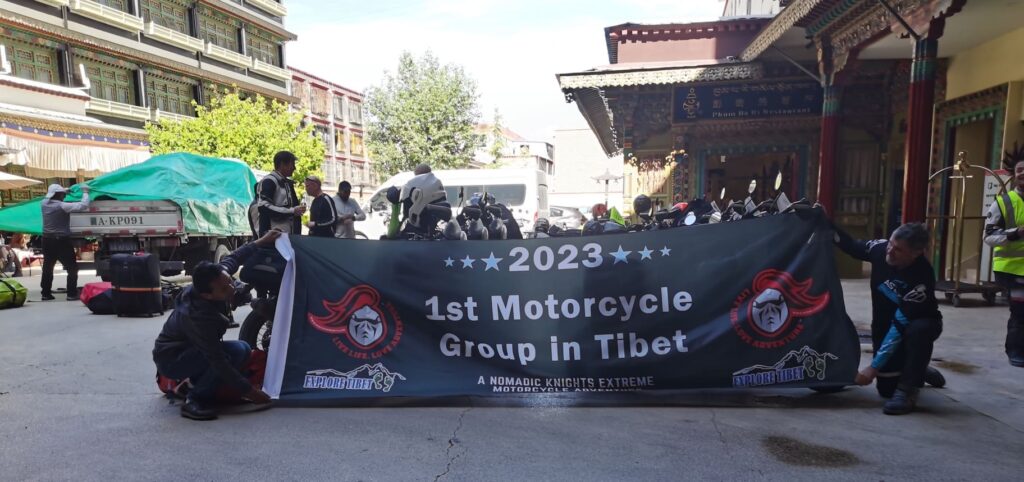
Costs & Booking Timelines
💰 Pricing
Typical 10–14 day rides range from $3,000 to 6,000 per person, depending on bike brand, permits, hotel standards, and group size.
Renting a bike is standard; importing your own may cost an extra $150–200 in vehicle permit fees.
📅 Booking Calendar
• 60 days before: submit bike info if self-imported
• 30 days ahead: tour operator begins permit applications
• 5 days before departure: apply for a Chinese visa in Kathmandu
Rider Reflections
Riders often recount the combination of spiritual awe and raw adventure. For example, one author notes the surreal sight of motorcyclists roaring past prayer-flag hillsides on the train route to Lhasa.
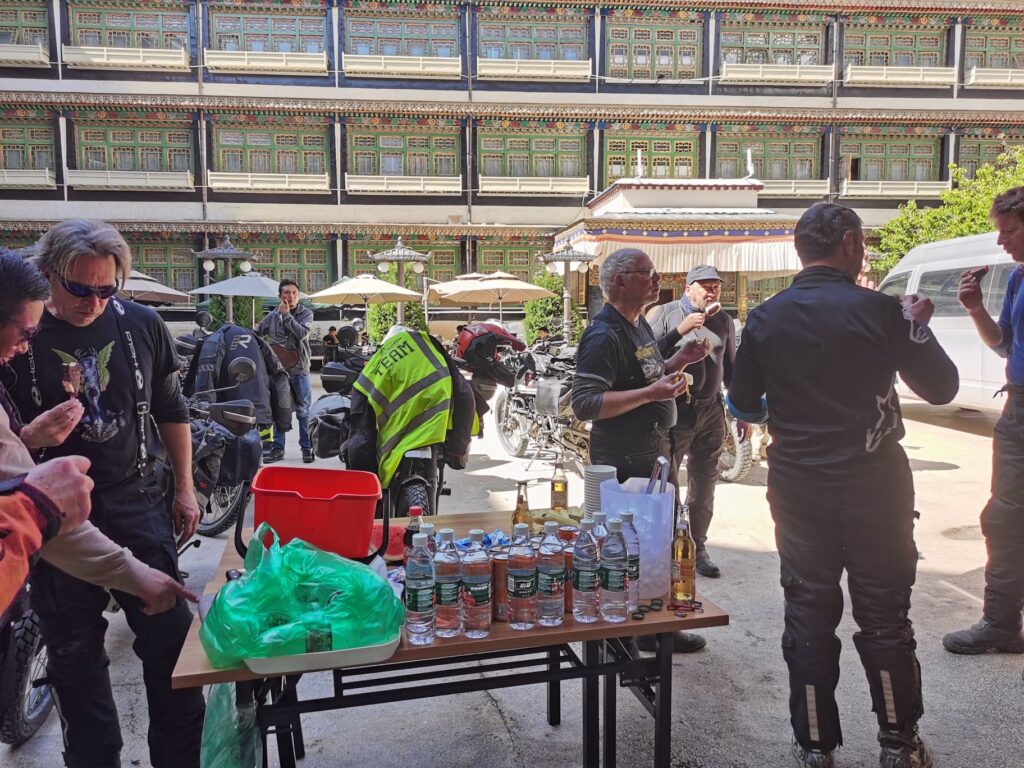
Final Thoughts: More Than a Ride
A Tibet motorcycle tour is more than a bucket‑list ride—it’s an intimate journey through sacred terrain, lived by wind, altitude, and ancient traditions. You’ll swap engine roar for whispered mantras, asphalt curves for glacier passes, and arrive changed—not just at destinations but within.
Whether it’s your first motorbike tour or your greatest spiritual journey, Tibet offers a ride like no other. Ready to plan your Himalayan adventure?
Let me know your dates and preferred route—I can help design a custom Tibet motorcycle itinerary, handle permit planning, and pair you with trusted Tibetan‑guided operators for an unforgettable adventure.
